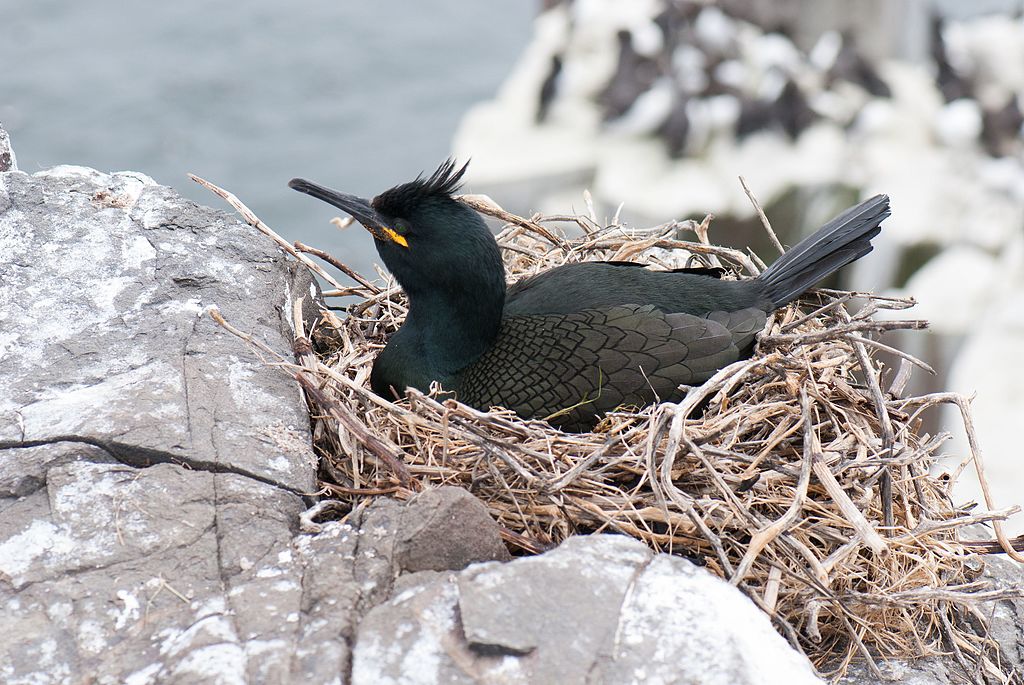News
New Study to Investigate What Impact Chemical Waste from Landfills has on Seabirds


Deterioration of aging chemical waste disposal sites could potentially allow a concoction of hazardous chemical pollutants to escape to the environment, including sensitive aquatic and marine ecosystems.
A new UK study has received funding to the tune of 2.3million British pounds to investigate what impacts chemical waste released from coastal landfills are having on the health, reproductive success, and survival of seabirds in the United Kingdom.
Previous studies have focused primarily on the negative impacts that climate change is having on seabird health and mortality, but the impact of chemical waste on seabird populations in the UK is still unclear.
Now a three-year study, conducted by the UK Center for Ecology & Hydrology (UKCEH) in collaboration with the University of York, supported by a grant from the Natural Environmental Research Council (NERC), will assess the effects of chemical waste on local seabird populations in an effort to guide chemical waste management policies applicable in coastal areas across the United Kingdom.
Household waste generated by humans that is sent off to landfills typically consists of a wide range of chemical toxins, including discarded medicines, household pesticides, heavy metals, plastics, and flame retardants, to name a few. Many of these chemical waste products are harmful to organisms when they are released into the environment.
There are currently over 2000 operational and inactive legacy coastal landfills across the UK. Legacy waste from poorly constructed older landfill sites that are now disintegrating poses the largest problem. Many of these sites were poorly managed and have not implemented any measures to prevent chemical waste pollutants from leaching into the environment.
There is growing concern that as these older inactive landfills deteriorate, exacerbated further by coastal erosion, a cocktail of toxic chemicals and harmful pollutants could seep into coastal ecosystems, which are already vulnerable to pollution from other sources, such as mining and wastewater effluent.
"Populations of many species of UK seabirds such as shags, kittiwakes, and guillemots are struggling due to climate change, including reduced prey availability due to warming sea temperatures and fatalities caused by more severe storms. Therefore, it is particularly important to understand the impacts of the additional threat posed by contaminants from waste,†explains Dr Francis Daunt of UKCEH, who is leading the project. "Persistent toxic chemicals can transfer and accumulate through the aquatic food web, and there is particular concern for the wellbeing of seabirds as top predators. They can also ingest pollutants in water or sediment directly while foraging for prey."
The study will focus on seabird populations located in the Firth of Forth, Scotland, as the area serves as breeding grounds for many important protected seabird populations, while also being vulnerable to pollution from several major sources, including over 100 operational and inactive landfill sites, as well as domestic and industrial wastewater effluent discharges.
The study will focus specifically on the impact of chemical waste on European shags, since this species is most likely to have been highly exposed to chemical waste pollutants from inactive landfills as they feed in coastal waters and prey predominantly on sand eel and other fish that live on the seafloor, where chemical toxins tend to accumulate.
The study will compare the health and survival rates of European shags from two breeding colonies: 1) Inchkeith island; and 2) the Isle of May, which is located further from the primary sources of chemical pollutants than Inchkeith island, and consequently, seabirds living there are expected to be less impacted by chemical waste pollutants.
The researchers will also compare the health and survival rates of birds that remain in the Firth of Forth the entire year to birds that migrate to other areas over the winter, which may not experience the same levels of exposure to pollutants as those that remain resident throughout the year.
"Wildlife and ecosystems in the Firth of Forth are exposed to a complex mixture of chemicals originating from waste, produced by the large number of people living close to the coast,†says Professor Alistair Boxall, a project team member from the University of York. “We will develop a risk assessment framework to inform future policies on managing waste in coastal regions."
The researchers plan to test their risk assessment framework by examining the impacts that pollutants from chemical waste have on seabirds. They will achieve this by comparing the levels of different chemical toxins in each bird examined with its overall health and survival, as well as the health and survival rates of their offspring.
Featured Image by Thomas Quine, CC BY 2.0, via Wikimedia Commons


